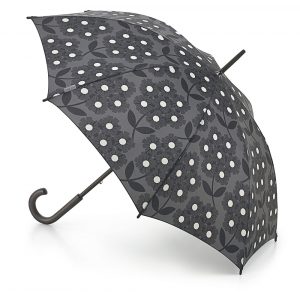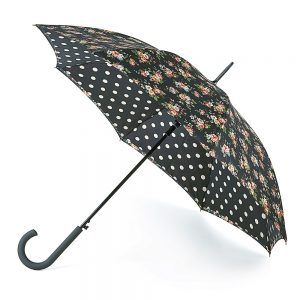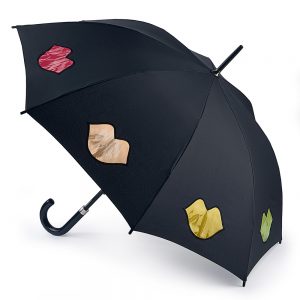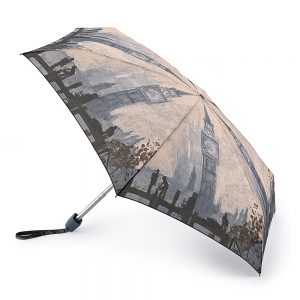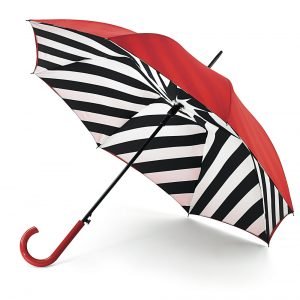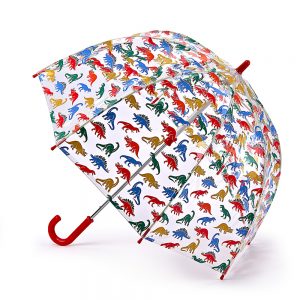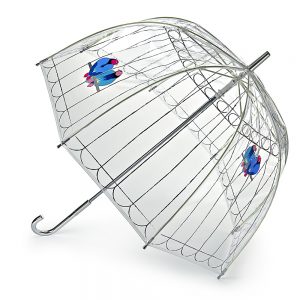In the UK, we spend around ten million pounds on umbrellas every year. But with the typical British weather pattern, the accessory is almost a necessity if you want to stay dry, warm and protected.
Although the umbrella, or brolly, is a commonly used item today, that has not always been the case. At one time, only the most high-ranking of civilians used an umbrella — and even then, it was not for rain protection. So, where does the brolly come from? How was it used? And in which ways has it transformed to become the accessory we use so much today? Read about the evolution of the umbrella here…
4th century BC
The world ‘umbrella’ comes from the Latin word for shade — umbra — and at first, nobody used them for rain protection. Apart from scant evidence to the contrary found in China, the use of the umbrella as we know it today was solely to safeguard humans from the sun — a product we’d call a parasol today. In fact, the term parasol is derived from the Spanish words for stop (para) and sun (sol).
Although some believe that umbrellas were used in China as far back as 2,000BC, most claim that it was around 400BC that the design became a widely used accessory. The ancient Greeks, Romans, Chinese, Egyptians, and civilizations in India and the Middle East all reportedly used the umbrella as a parasol, and sculptures have even been found depicting the use of umbrellas in various locations across Egypt around this time. Most commonly, parasols were mainly used by high-ranking women, members of the clergy, and other powerful public figures. Unlike today, it was a clear symbol of rank and superiority.
With regard to its design, many predict that the umbrella (i.e. the canopy) was influenced by large trees due to its original use as a shading implement. Early umbrellas and parasols were often made from leaves, feathers and branches — but interestingly, the overall form appears very similar to modern designs.
After several centuries, the umbrella began to spread across the connected world. Some even think that it was in 1066 that the Normans brought the umbrella to England. However, nobody has found a way to prove this yet, and others claim that it was King Charles II’s wife, the Portuguese Catherine of Braganza, who introduced the country to the brolly in the mid-1600s.
17th century
But when did we start using the umbrella for rain protection? Most people place the date that we started using the umbrella to keep us dry in the 1600s, and according to accounts, English society — along with France and Italy — pioneered the trend!
During this time, most umbrellas were made from silk and didn’t offer much in the way of water resistance. However, apart from the difference in fabric and the fact that only privileged people owned one, the outline of the 17th-century umbrella mirrors what we see today. Thankfully, by the very end of this century, designers were beginning to hone waterproofing techniques…
18th century
A rising trend in sociable coffee houses and the need to shelter people as they walked from venues to their carriages added pressure on the umbrella industry.
For the first half of the 1700s, umbrellas remained strictly a female accessory, although, they grew rapidly in popularity. Around 1750, a gentleman named Jonas Hanway took it upon himself to launch a trend in men’s umbrellas, protecting himself with a rain umbrella as he traversed the streets of London. He put up with intense ridicule for his daring style at first, but eventually, men came around and the trend took off. By the turn of the 19th century, the rain umbrella became a common accessory for both men and women. It was also during this era that the term ‘Hanway’ was used as another name for an umbrella!
What were 18th-century brollies made from? We’ve already noticed that the general form and canopy shape appear unchanged from today’s designs, however, the materials used to construct them certainly have. Throughout the 1700s, umbrellas were created from whalebone mounted atop a long stick and then covered in a heavy cotton fabric doused in oil or wax to ensure a more waterproof product. It would take a few more years yet before improved fabrics and materials would be used in umbrella construction.
19th century
Once umbrellas established themselves as a genderless accessory, we started to see a divide in their construction. Men’s umbrellas were generally far heavier and weighed around four pounds, while women’s brollies were still often made using silk materials and to a smaller size. Although there was an option to have your umbrella made from split cane rather than whale bone, this made the product cheaper and lower in quality. Positively, this helped more people afford the once-luxury accessory.
The umbrellas of the Victorian Era were sometimes made from wood — which were hard to fold — until the 1850s, when Samuel Fox created the steel-ribbed brolly.
20th century
By the early 20th century, ladies from privileged backgrounds began to lose interest in using parasols as a fashion piece. Eventually, these disappeared from fashion around the 1930s, as more women became inclined to favour a tanned, glowing complexion.
In 1928, Hans Haupt pocket umbrellas came on the scene and the foldable umbrella market took off in Europe!
21st century
From the bones and feathers of the past to the treated nylon and fibreglass of today, umbrellas have had an interesting transformation over thousands of years.
Now, we’ve returned to treating the umbrella — both men’s and women’s — as both a fashion accessory and a weather-resistant necessity — from patio umbrellas large enough to protect a garden table, to compact brollies we can fit perfectly in our handbags. Today, you can find aerodynamic canopies designed to withstand intense rain and wind without turning inside out — a major bugbear of the brolly user — as well as tech umbrellas enhanced with gadgets, like GPS, Wi-Fi and Bluetooth! With a wide array of sizes and shapes in a spectrum of colours and designs, the question is: what’s next for the brolly?
Browse our selection of designer, children’s and sports umbrellas before you go

